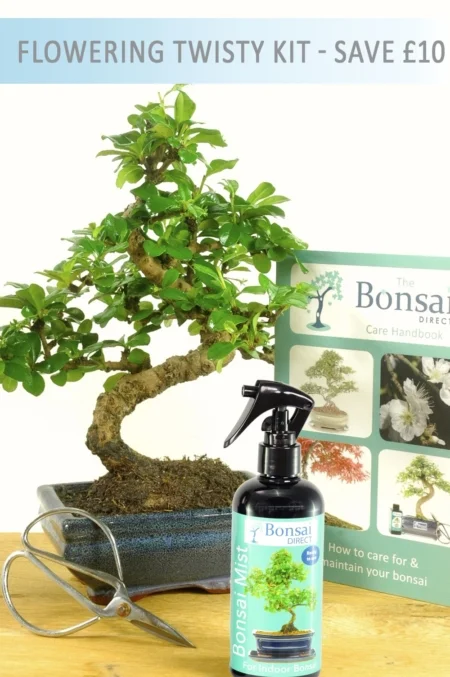Frequently Asked Questions – Bonsai Basics
Here at Bonsai Direct, we like to help our customers through their bonsai journey so they can successfully grow their trees. We have a lot of frequently asked questions asked therefore we thought it may be useful to have all of our FAQs in one place for you to access whenever you want! We have included some articles and videos put together by bonsai master Lloyd Noall.
How big do bonsai grow?
All bonsai grow differently, at different rates and typically the size is decided by the grower. The largest bonsai can grow up to between 60-80 inches!
How will my order be shipped?
Smaller orders are sent via 1st Class Royal Mail (unless stated otherwise on the product), we do not ship trees with Royal Mail.
Most orders are shipped with DPD, our packaging does have our logo and ‘Fragile this way up’ on all four sides. This is not to spoil the surprise, but we have found in trials that if the couriers appreciate what is in the box, they take considerably more care. You should receive a 1-hour delivery slot by text from the couriers.

How much do bonsai cost?
How long is a piece of string? We have trees ranging from £30 to over £10,000.
I’ve just received my tree, where do i put it?
Place your (indoor) tree in a position that has a good amount of daylight but avoid direct sunlight. You want a room with a stable temperature, no draft but not too near a radiator as this will dry the tree out.
I have had my tree for a few weeks but the leaves are starting to turn yellow and drop off.. What is going on?
Your bonsai is simply reacclimatising to its new location – this is completely normal and nothing to worry about. The old leaves will drop, but in a few weeks, you should see lots of new buds appearing.
How do i water my tree?
Keep the soil just damp at all times and mist the leaves/branches regularly with our bonsai mist or water. Here is a video which may be helpful;
https://www.bonsaidirect.co.uk/bonsai-care-advice/bonsai-care-information/how-do-i-water-my-indoor-bonsai-tree-2/

How do i know if my tree is being under/overwatered?
If your tree has become wobbly in the pot, there is a large amount of chalky residue around the rim of the pot or the leaves have black/brown tips; your tree is most likely being overwatered.
If the soil is coming away from the sides of the pot, the leaves are dry and crispy or the bark is shrivelled; your tree is most likely being underwatered.
My tree is covered in bugs.. What do I do?
Treatment can differ depending on the pest and the infestation, we would recommend sending us an email with a few photos so that we can help you to find the best course of action.
How do i prune my tree?
Using a sharp pair of scissors, please trim back the long straggly shoots. The ‘pads’ of leaves should be neat and well-defined. This will encourage buds to appear further down the branches. Here is a link to our pruning video, which you may find helpful:
https://www.bonsaidirect.co.uk/bonsai-care-advice/bonsai-care-information/how-do-i-prune-my-bonsai-tree-2/
How do i repot my bonsai?
Your bonsai will be absolutely fine in the pot in which it arrives for at least one year. Ideally, you should repot (into a larger pot) or root prune (if going back into the same pot) an indoor bonsai in warmer summer months. All bonsai will need repotting every 1 – 5 years. The exact time depends on the size and type of the tree, and the dimensions of the pot. It is usually very visually obvious when the tree needs repotting, as it begins to look out of proportion in comparison with the pot. If at any point you feel like your bonsai might need repotting, but you’re not sure, feel free to send us a photo so we can advise you. Here is a link to our repotting video, which you may find helpful:
https://www.bonsaidirect.co.uk/contact-us/bonsai-care/how-do-i-repot-my-bonsai/

How do i shape my bonsai?
All trees are different. It depends where the branches are, what direction they’re facing and so on. Here is a link to a shaping video which may help;
https://www.bonsaidirect.co.uk/bonsai-care-advice/wiring-guides/
How long do bonsai live?
With the correct care, bonsai will outlive us all.
Do you have another question? Send us an email and we will be more than happy to help.
For more in-depth knowledge or answers to your question, please check out the care section of our website.
























































